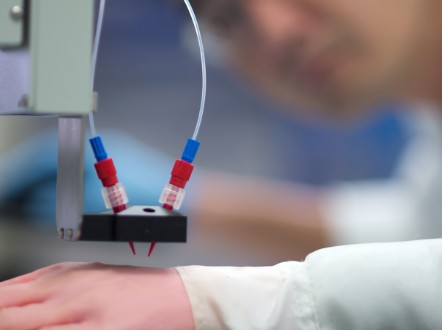A collaboration of Spanish researchers from Universidad Carlos III de Madrid, the Center for Energy, Environmental and Technological Research, Hospital General Universitario Gregorio Marañón, and BioDan Group, a bioengineering company, have reportedly developed a 3D printer that produces human skin ready for transplantation. Besides obvious applications such as producing replacement skin for burn victims, it can be used to test drugs, new therapies for skin conditions, and for evaluating the safety and effectiveness of cosmetic products. The researchers believe it will function about as well as natural skin and it is already being evaluated by European regulatory agencies for clinical use.
The printed skin has both dermis and epidermis layers, as well as the stratum corneum, the exterior layer that is made of dead skin cells. The dermis is made of fibroblasts and generate collagen, making the material extremely similar to natural skin in terms of pliability and strength.
The technology relied on developing and learning how to use a set of biological inks, consisting of things like cells and proteins, so when they’re brought together they work as intended. “Knowing how to mix the biological components, in what conditions to work with them so that the cells don’t deteriorate, and how to correctly deposit the product is critical to the system,” said Juan Francisco del Cañizo, of the Hospital General Universitario Gregorio Marañón and Universidad Complutense de Madrid.
“This method of bioprinting allows skin to be generated in a standardized, automated way, and the process is less expensive than manual production,” said Alfredo Brisac, CEO of BioDan Group, in a statement.

